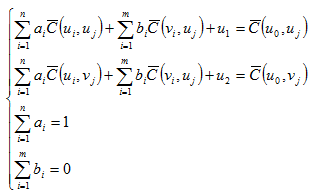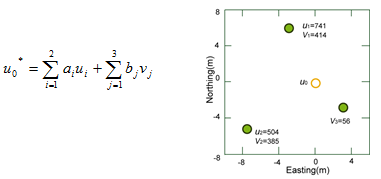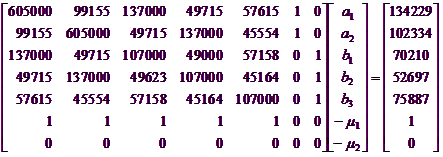
Co-Kriging Estimation
Using the correlations between 2 variables, Co-Kriging partially estimates one of the 2 variables with the other easily-observed variable. Co-Kriging can hugely increase the estimation accuracy and sampling efficiency. However, practically, Co-Kriging requires a known correlation function, and this has to be done through sampling at multiple locations at the same time in order to measure the correlations between the 2 functions. Based on the joint regionalized variable theory, Co-Kriging can estimate the unsampled regions through establishing the cross covariance and cross variogram model.
Studying a joint regionalized phenomenon resembles studying a single variable phenomenon. Assuming that K joint regionalized variables,
1.The mathematical Stable of each
2.The cross covariance of each regionalized random variable
In the above equation, K,
The above equation is the variance of
3.When the inner assumed conditions are satisfied, the mathematical expectation of the increment
|
➢![]() Equation for Cross Covariance and Cross Variogram
Equation for Cross Covariance and Cross Variogram
At point x and point x+h, we measure the observed values for the 2 variables, respectively. They are
where
Equation for Cross Variogram is:
|
Theoretically, Co-Kriging has the same nature as the Ordinary Kriging. We can use the Ordinary Kriging derivation to derivate Co-Kriging. Assuming that there are k variables in a research area consisting of the joint regionalized variable
Where the estimated center is x0, and the range is the average of Vk0
Where there are n known observed samples
Where the estimator of Zvk0 is
|
➢![]() Co-Kriging Estimated Equations and Co-Kriging Estimated Variance
Co-Kriging Estimated Equations and Co-Kriging Estimated Variance
If a variable average at point x0 is u0 and there are 2 joint regionalized random variables,
Where
The above equation is n+m+ second-order linear equations. After solving the linear equations, we can obtain the weigh coefficients
|
➢![]() Example
Example
Assuming that there are 2 joint regionalized random variables u and V in a research area, where u0 is the sample point to be estimated. There are known sample points
According to the known theoretical models to calculate the joint covariance functions Cu(h)and Cv(h)and the cross covariance function Cuv(h)of each variable, the Co-Kriging linear equations are:
We can solve the above equations to obtain:
When we put the Co-Kriging weigh coefficients into the Co-Kriging linear estimation equations, we can obtain the estimator of
Where the Co-Kriging estimated Cross Covariance is: |
©2017 Supergeo Technologies Inc. All rights reserved.







